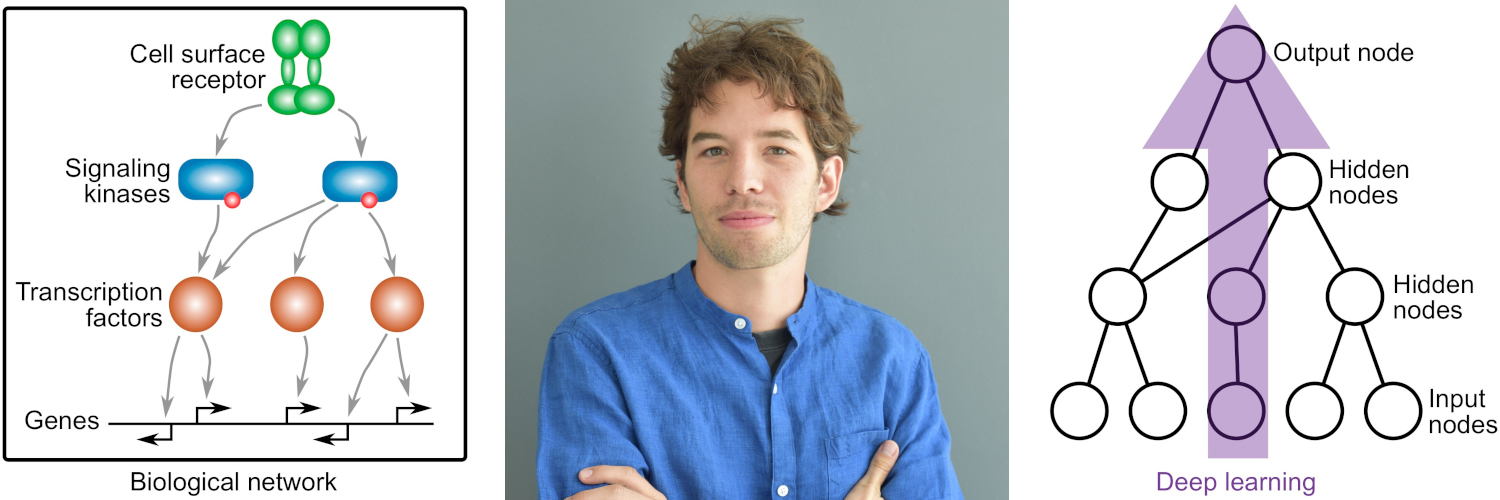
Multi-omics and single-cell analyses
Molecular systems are being profiled on multiple layers and on the single-cell level. Interpretation of the resulting data requires multiple steps of bioinformatic processing and downstream exploratory analysis. We apply and develop computational methods that help with the analysis and interpretation of various -omics data including transcriptomics, proteomics, and epigenomics.
Network biology
Biological regulation is often thought to occur in confined events and signaling pathways but has also been shown to form large and complex networks with extensive cross-talk. Network biology (based on graph theory) provides the computational and mathematical tools to study complex systems and to predict novel regulatory events and biological pathways. We apply network biology to better understand regulation within and between cells.
Machine learning
Big biological data require computational tools that can handle (and profit from) the availability of large datasets. Machine learning excels at learning complex relationships (for example to recognize cats in images), and provides a rigorous framework for predicting one type of data from another. We apply and develop machine-learning approaches tailored to studying biological systems and predicting across multi-omics data.




